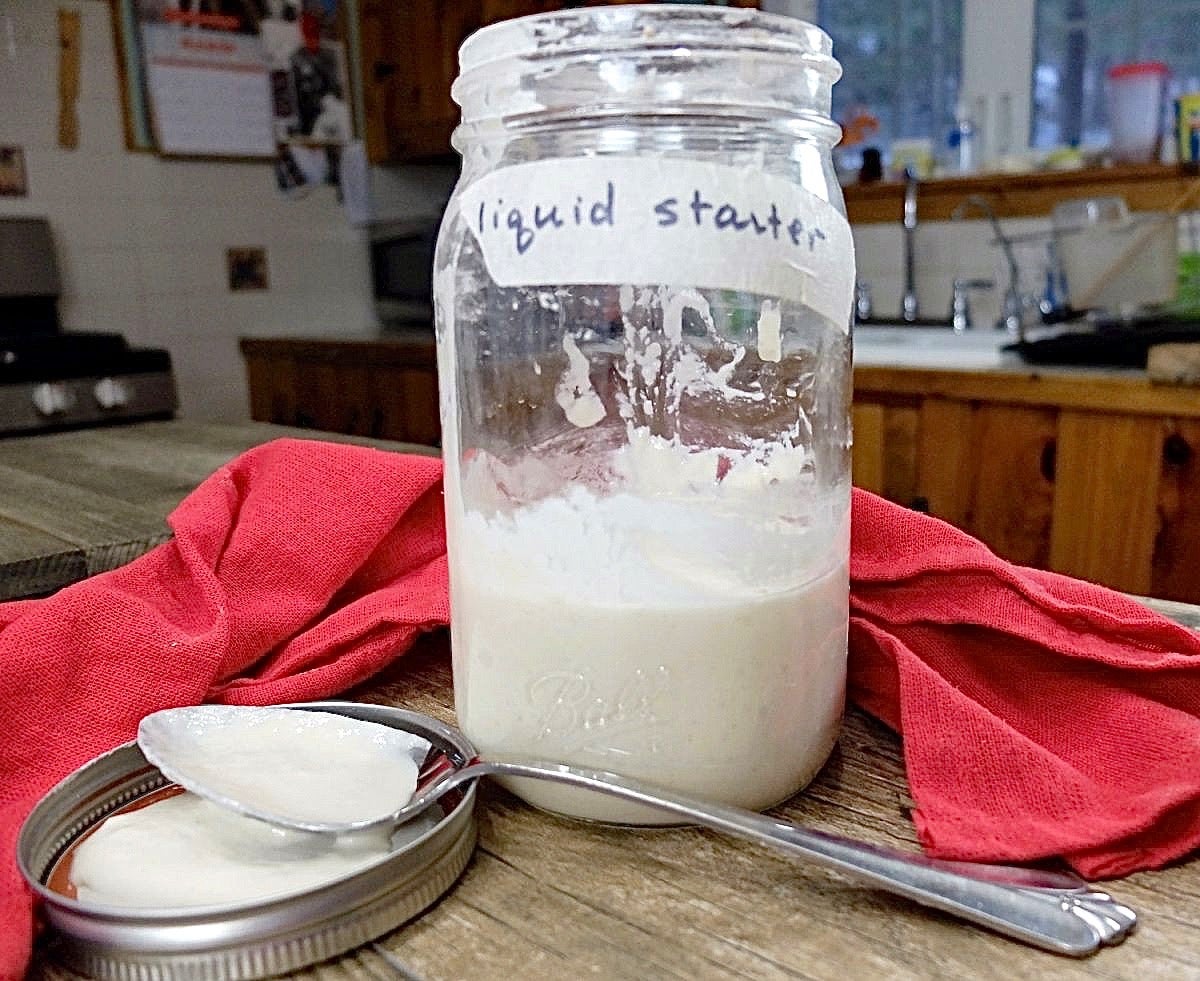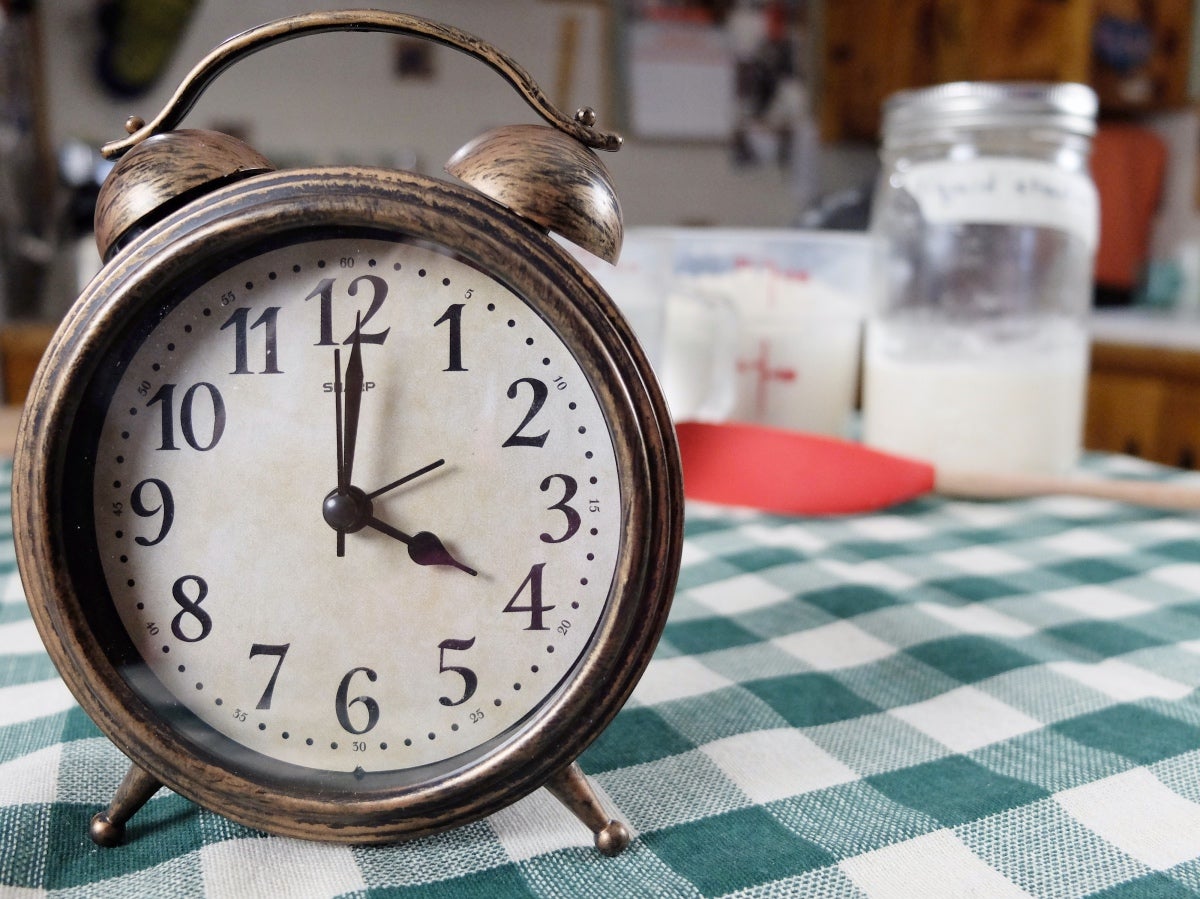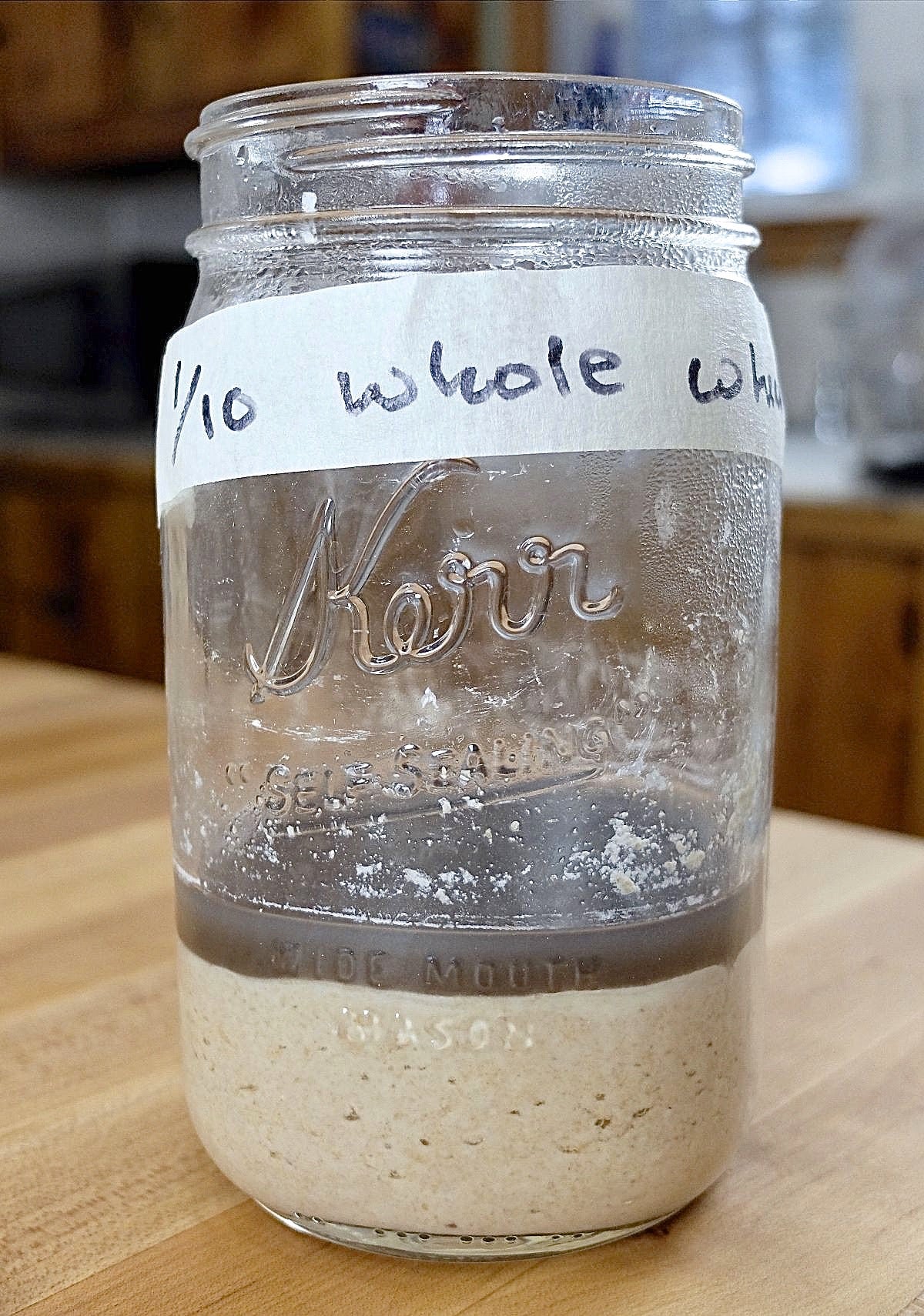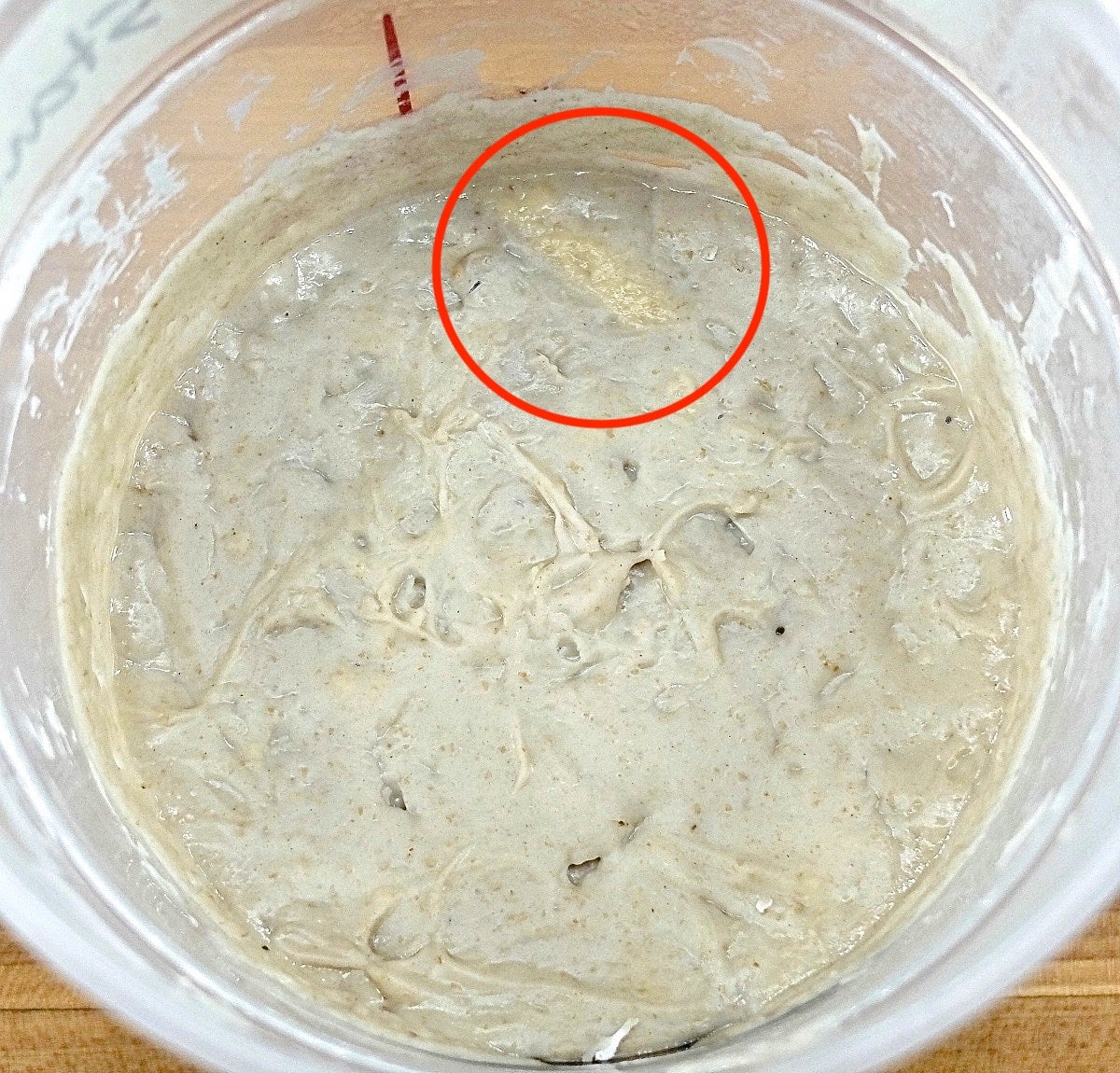


“Did I kill my starter?” This is a surprisingly common sourdough question on our Baker’s Hotline. Novice and experienced bakers alike worry about the viability of their starters and call us for sourdough starter troubleshooting advice.
For many sourdough bakers, the underlying biochemistry at work in their starter remains a bit of a mystery. Thankfully, it's quite possible to bake great sourdough bread while still being a little fuzzy when it comes to what’s actually happening in that little jar of starter.
The 6 to 10 days it takes to create a healthy and mature sourdough starter from scratch requires slightly more attention to "death threats," because a fledgling starter hasn't yet developed the defenses that characterize a mature starter. But once your starter is fully developed, it's really pretty darn hard to kill.
And if you've purchased a sourdough starter from us, rest assured that it's a mature specimen that will stand up well against unwanted bacteria or mold.

METAL: Stirring your starter with a metal spoon or placing it in a metal bowl won't kill your starter. While we don't recommend making or keeping your starter in contact with reactive metals like copper or aluminum, stainless steel is harmless.

MILD NEGLECT: Missing a feeding or not timing the feedings exactly 12 hours apart won't even come close to killing your starter. Please don't ever set your alarm to get up in the middle of the night to feed your starter!
INCORRECT FEEDINGS: Feeding your starter the wrong amount of flour or water won't kill it. While your starter may seem too dry or too wet, and may not rise the way you expect, no permanent damage has been done. You can correct its consistency by adding a little more flour or water, and then being more careful the next time you feed it.
BRIEFLY FREEZING YOUR STARTER: While there's some dispute among sourdough enthusiasts about the benefits and/or dangers of freezing sourdough starter, a brief period in the freezer isn't likely to kill a fully developed starter.
I recently froze a portion of my well-maintained starter a few hours after it was fed. Three days later I thawed it out at room temperature and let it continue to ferment. It was definitely sluggish at first, but after a second feeding it rose well and had a good aroma.
That being said, too much time in the freezer will definitely damage some of the wild yeast in your starter, and is also likely to kill off some of the friendly bacteria that contribute flavor. If you need to put your starter on hold for an extended time, we recommend drying your starter.
HEAT: If you allow your sourdough starter to ferment in the oven with the light on to keep it warm, and then forget it's in there and turn on the oven, it's unlikely your starter will make it out alive. Yeast dies at 140°F, and it's likely that your sourdough starter will suffer at temperatures even lower than that. It’s best to maintain your starter at comfortable room temperature (around 70°F), though a little higher or lower won't hurt anything.
SEVERE NEGLECT: If you neglect your starter long enough, it will develop mold or signs of being overtaken by bad bacteria. Mold can appear in various colors and is typically fuzzy in appearance. Bad bacteria is generally indicated by an orange or pink tinge or streak. Once your starter has lost its natural ability to ward off intruders, it's time to start over.

"Hooch" is the liquid that collects on the top of your starter when it hasn't been fed in awhile. This liquid is the alcohol given off as wild yeast ferments. The presence of hooch isn't a sign that your starter is in danger. However, it does indicate that your starter is hungry and needs to be fed.
When your starter is neglected for an extended period, the hooch tends to turn from clear to dark-colored. We get lots of calls from sourdough bakers worried about the safety or danger of various hooch hues. Is gray bad? What about brown or black? Surprisingly, none of these colors indicate that your starter has spoiled.

However, if you see a pink or orange tint or streak, this is a sure sign that your sourdough starter has gone bad and should be discarded. The stiff starter above was left out at room temperature for two weeks. It's definitely time to throw it out and start over.
I hope you'll share your own sourdough starter questions and discoveries below. There's always more to learn when it comes to sourdough!
For more information, please check out part 2 of this sourdough starter troubleshooting post!


January 8, 2024 at 11:10pm
My starter is 10 days old and has a very strong alcohol smell. I originally started with discarding and doing a feed every 24 hours, but over the last three days switched to discarding and feeding every 12 hours to try to lose some of the alcohol smell. This increase in feeding hasn't seemed to help so I'm wondering if I just need to let it run its course to even out or if I need to change something?
I have it in a glass jar on the counter with a glass lid, home averages 70-72°F, and I've been feeding with unbleached bread flour, or all purpose flour depending on what I have at the moment. Thank you for any help you're able to give!
January 13, 2024 at 10:42am
In reply to My starter is 10 days old… by Katey (not verified)
Hi Katey, you didn't mention the ratio of ingredients you're feeding your starter or its rising behavior, but usually a heavy alcohol aroma is more likely to occur when the starter has gone beyond ripe and has fallen significantly. If you have a scale, you might want to try feeding your starter with a reduced percentage of starter as compared to water and flour. This may allow you to line up your twice daily feedings closer to when your starter is at its peak rise, which should help to improve its aroma and rising behavior. I would recommend trying something like 1:3:3 or even 1:4:4 (starter:water:flour, by weight). For our starter routine, a 1:4:4 feeding would look like this: 28g starter + 113g water + 113g flour. I would also encourage you to feed your starter with our Unbleached All-Purpose Flour rather than our Bread Flour. While Bread flour certainly won't harm your starter, there's a little more starch in AP flour, so your starter will be getting a slightly better meal. Good luck and let us know if this improves the situation!
December 29, 2023 at 6:42am
My starter has a layer of clear liquid on the bottom separated from the rest of the starter- do I need to start over or what do I do?
December 29, 2023 at 3:03pm
In reply to My starter has a layer of… by Gretchen DeVries (not verified)
Hi Grethen, are you creating a starter from scratch? This isn't too uncommon during the early days of starter development, so I think it's fine to continue. Are you feeding equal parts by weight of starter, water and flour, according to our recipe? If you happen to be feeding equal parts by cups this results in a much more liquid-like consistency, which can be more prone to separating in this way.
December 27, 2023 at 7:51pm
Hi Barb, my name is Anatoliy, I am trying to make the rye bread starter. I did it before a lot of times and it was easy to make and it was smell good. Nowadays my starter has a white film. It does not smell good. When I use it for making rye bread, the bread became moldy in 2 - 3 days.
I changed rye flour, I changed the jar, room, water, temprature....the result is the same, bad result.
Barb, can you help my to understand what is wrong with my starter?
December 29, 2023 at 2:58pm
In reply to Hi Barb, my name is Anatoliy… by Anatoliy (not verified)
Hi Anatoliy, is this a rye starter that you are creating from scratch? Or is it an established rye starter that has developed a white film and smells bad? In either case it sounds like your rye starter isn't doing well and may require starting over. Does the white film look like mold? What is your normal feeding routine? How much starter, water and flour are included in each feeding, and how often are you feeding your starter? If you want to try to revive it, I'd recommend discarding all but a tablespoon or so of relatively healthy-looking starter from the bottom of your container. Feed it twice daily according to this feeding routine, substituting rye flour for the all-purpose flour called for in this recipe. Our smaller starter recipe fits nicely in an 8-ounce canning jar and will save on flour as you attempt to revive your starter. It may take several days of twice daily feedings at room temperature to bring your starter back to having a good aroma and rising well, but it's worth a shot.
December 23, 2023 at 10:42pm
I have a fairly strong starter that is at least 2 years old (bought from someone so probably much older) I’ve never had any problem getting it to come back to life after neglecting it - even left it in the fridge for about 6 months untouched. However, recently, I left it a bit too long on the counter without feeding and some hooch developed, I poured most of it off and fed it and ever since it has a blue/gray tinge to the top half of the starter. I cut it way back, to about 10 grams, and built back up, but still always regrows with the top 2-3 inches gray! Any idea what that’s about?
December 30, 2023 at 9:30am
In reply to I have a fairly strong… by Olivia (not verified)
Hi Olivia, you didn't mention what your normal feeding routine is, but blue/gray are not normally worrisome colors, and this is probably mostly due to oxidation. If you're not already feeding your starter twice daily at room temperature, increasing the frequency of feedings for a few days might be all that is necessary to improve the appearance, aroma and rising behavior of your starter. In addition, I would try to feed your starter according to our maintenance routine (equal parts by weight of starter, water and flour) and see if that makes a difference. If your starter is being fed partly with rye flour or whole wheat flour, I've noticed that these types of flours tend to show more discoloration on the surface due to oxidation than a white flour starter usually generates. Again, this isn't anything to worry about.
December 11, 2023 at 4:42pm
I took from the main starter into a brand new jar last night, and fed her. I looked today and it’s dry looking with a tan shade on top. The tan looks dry and no wet like the hooch I’ve read about. What to do?
December 13, 2023 at 4:13pm
In reply to I took from the main starter… by Tiff (not verified)
Hi Tiff, you will want to be sure that your starter is covered well, but not sealed, so that it does not dry out so quickly. The best thing to do is continue with regular feedings every 24 hours, discarding with every feeding. Your starter should be back on track shortly!
Pagination